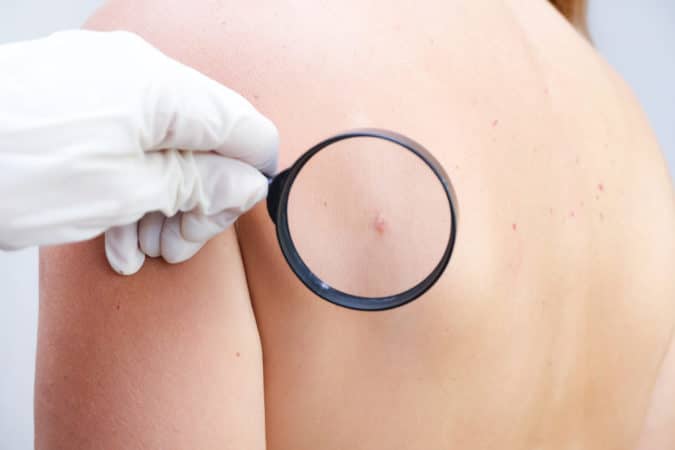As we age, our skin naturally undergoes changes, which may include the development of skin growths. For some patients, these growths can cause discomfort or cause irritation. If you notice a skin growth, it is important that you get it checked by a dermatologist to ensure that it is not cancerous. Whether your growth is benign or cancerous, skin growth removal is a fast and easy treatment option.
What is Skin Growth Removal?
While most skin growths are harmless and benign, in some cases, it is important to determine if certain growths are cancerous. Some benign growths may indicate a systemic condition, such as a hormonal disorder or a genetic disease. A skin biopsy may be required to best evaluate a skin growth that has changed or displays characteristics of malignancy.
Common types of skin growths include:
If you are unhappy with a skin growth, it is important that you do not pick at it or try to remove it at home, as this can cause infection or worsening of the discomfort. Always consult a dermatologist when it comes to skin lesions and growths.
Who is a Good Candidate for Skin Growth Removal?
If you have a skin growth that is causing discomfort, pain or is unsightly, or if your growth has been proven cancerous then you may benefit from skin growth removal. The best way to determine if this procedure is right for you is through a consultation with one of our dermatologists. During your consultation, your dermatologist will examine your skin growth, diagnose it, and determine the best course of treatment for you.
What to Expect During Skin Growth Removal?
The main goal of skin growth removal is to remove the growth with as little disturbance to the surrounding tissue as possible. At HMGS Dermatology, our team aims to create as small a scar as possible during your procedure.
During skin growth removal, the growth and the area surrounding it will be numbed using a local anesthetic. Then, your dermatologist will surgically remove the skin growth using a scalpel. There are a number of different removal techniques that may be employed, depending on the type and size of the growth. Stitches or surgical glue may be used to close any incisions.
Benign Skin Growth FAQs
Can dry skin cause bumps?
Can I remove seborrheic keratosis myself?
Can keratosis become cancerous?
Can you pick off seborrheic keratosis?
How do you get rid of keratosis?
Recovery from Skin Growth Removal
Following skin growth removal, the area may be stitched or bandaged, depending on the type and size of skin growth that was removed. All skin growth removal procedures will create a scar, though they will fade with time. Be sure to avoid activities that may stretch the skin following your procedure, as stretching the skin can result in a larger scar. Healing can take several weeks, with full healing completed after two months. Your dermatologist will provide you with specific aftercare instructions to ensure safe and quick healing.
Schedule a Consultation
Are you interested in learning more about skin growth removal? If so, contact our office today to schedule your consultation appointment with one of our dermatologists.

Get Started With A Visit!
Fill out the form below and we will reach out to you shortly to schedule an appointment.